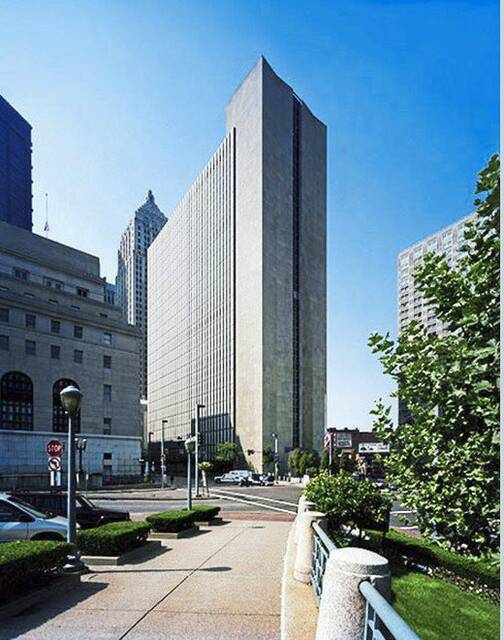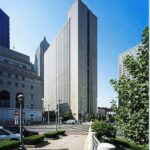The Trump administration on Tuesday released a list of hundreds of federal properties it says it could close or sell, including offices for the Social Security Administration and Internal Revenue Service, after deeming them “not core to government operations.”
The list, which has since been taken down from the General Services Administration website, spans nearly every state and contains properties ranging from courthouses to office buildings to parking garages.
None are on the market, but the list reflects the president’s slash-and-burn strategy for shrinking the federal government.
In Western Pennsylvania, the Social Security Administration buildings in Pittsburgh’s East Liberty neighborhood and Greensburg as well as the multi-agency William S. Moorhead Federal Building in Downtown Pittsburgh were among those listed on the chopping block.
Tenants in the federal building on Liberty Avenue include the IRS, U.S. Army Corps of Engineers, Veterans Benefits Administration, Department of Housing and Urban Development, U.S. Military Entrance Processing Command and Social Security Administration.
Nine other properties in the state and 320 nationwide were marked for the so-called “disposal.”
“Selling ensures that taxpayer dollars are no longer spent on vacant or underutilized federal spaces,” the General Services Administration website read. “Disposing of these assets helps eliminate costly maintenance and allows us to reinvest in high-quality work environments that support agency missions.”
The GSA initially identified 443 properties as non-essential, but pared back that number Tuesday evening.
U.S. Rep. Summer Lee, D-Swissvale, hit back, stating “a responsible administration would be driving investment into downtowns recovering post-covid, not trying to harm them further.”
She said shutdowns in the Pittsburgh area would be “another blow to working people, another set of jobs lost, and another hit to the local businesses that rely on the workers in those buildings.”
U.S. Sen. John Fetterman, D-Braddock, declined to comment.
The House member representing Greensburg, U.S. Rep. Guy Reschenthaler, R-Peters Township, did not immediately return a request for comment.
U.S. Sen. Dave McCormick, R-Pittsburgh, did not immediately return a request for comment.
Originally, the list included some of the most recognizable buildings in the nation’s capital, like the J. Edgar Hoover Building, which serves as FBI headquarters; the Robert F. Kennedy Department of Justice Building; the Old Post Office, where President Donald Trump once ran a hotel; and the American Red Cross headquarters.
Multiple other agencies stood to lose their headquarters, such as the Department of Labor and HUD.
The designations appear to be part of Trump’s and billionaire Elon Musk’s unprecedented effort to slash the size of the federal workforce and shrink government spending.
Selling these buildings could save the federal government hundreds of millions of dollars, they claim, while also dramatically reshaping how major Cabinet agencies funded by Congress operate.
The Trump administration has also demanded that federal workers report to the office every day.
Even so, eliminating federal office space has been one if its top priorities. Last month, GSA regional managers received a message from the agency’s Washington headquarters ordering them to begin terminating leases on all of the roughly 7,500 federal offices nationwide.
In a follow-up meeting, these managers were told to terminate as many as 300 leases a day, according to an employee who spoke on the condition of anonymity for fear of retaliation.
Musk’s Department of Government Efficiency has listed scores of canceled office leases on DOGE’s official website, raising questions around the country about what will happen to services provided from those offices.
As for the properties that had been listed by the GSA, the agency’s Public Buildings Service said the bulk of them are classified as office spaces.
“Decades of funding deficiencies have resulted in many of these buildings becoming functionally obsolete and unsuitable for use by our federal workforce,” the service wrote.
The service added the GSA will consider the buildings’ futures “in an orderly fashion to ensure taxpayers no longer pay for empty and underutilized federal office space, or the significant maintenance costs associated with long-term building ownership — potentially saving more than $430 million in annual operating costs.”
The Associated Press contributed to this story.











